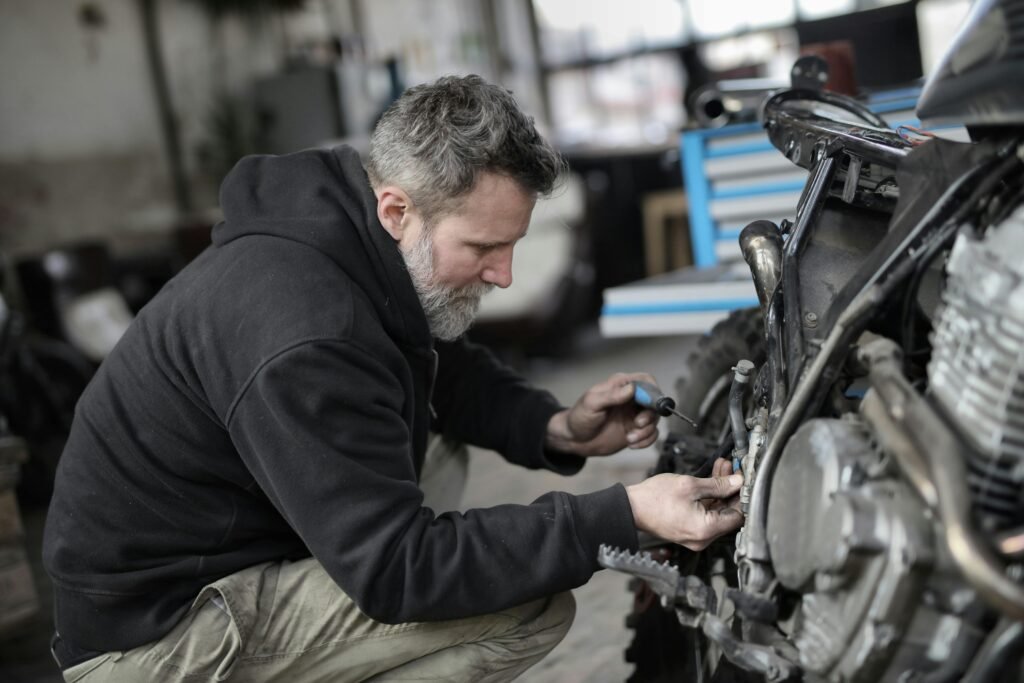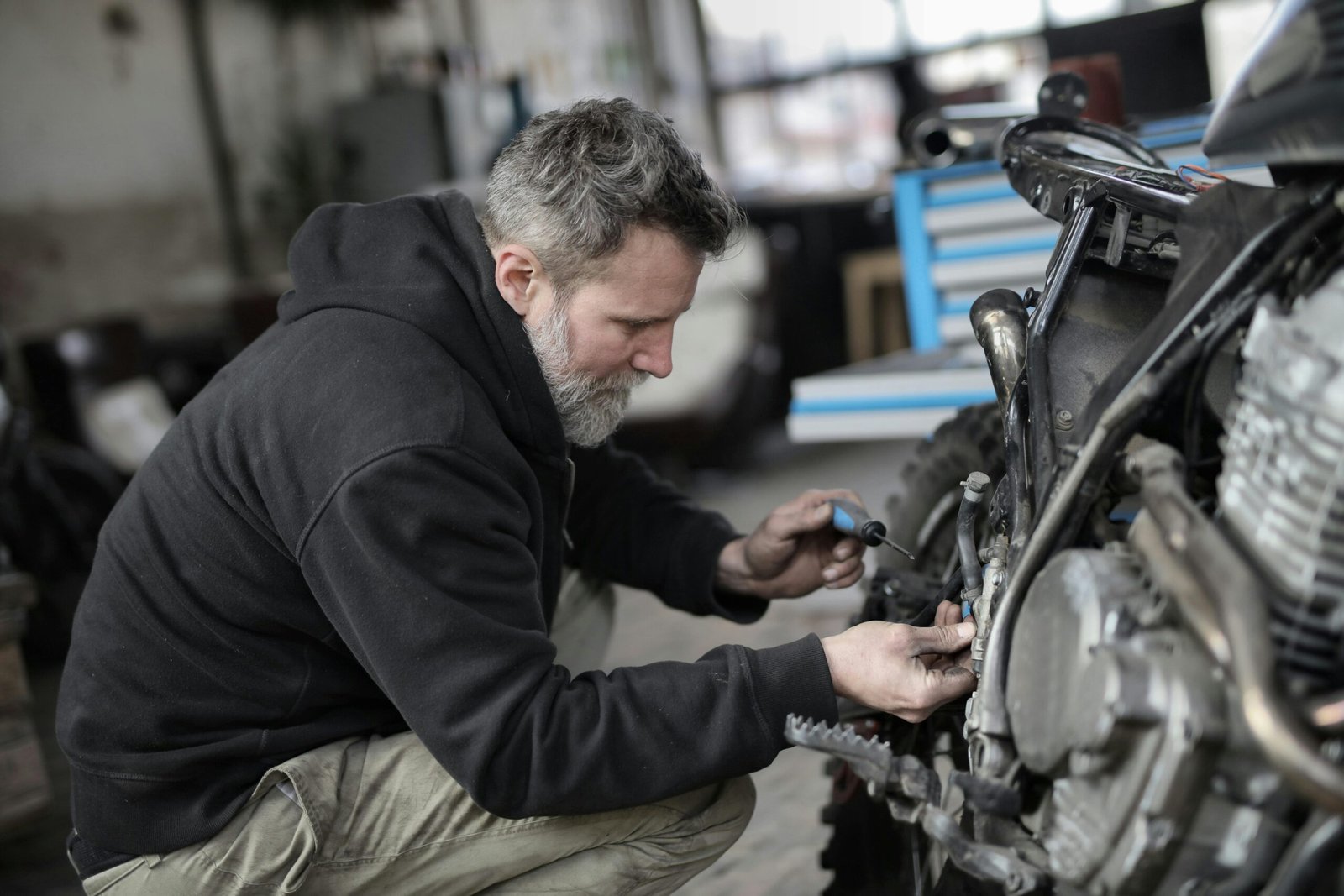Welcome to the ultimate guide on DIY wallet repair and maintenance! In this article, you will learn all the tips and tricks you need to breathe new life into your worn-out wallet. From fixing broken seams to restoring faded leather, you’ll be equipped with the knowledge and skills to keep your wallet looking fresh and functional. Say goodbye to investing in expensive replacements and hello to saving money with these simple and effective DIY techniques. Let’s get started on giving your wallet the TLC it deserves! Have you ever found yourself in a situation where your favorite wallet is falling apart at the seams? Don’t worry, we’ve all been there. Fortunately, with a bit of know-how and some handy tips and tricks, you can easily repair and maintain your wallet on your own. In this article, we’ll guide you through the process of DIY wallet repair and share some valuable tips to keep your cherished accessory in top shape. Let’s get started!

This image is property of images.pexels.com.
Assessing the Damage
Before diving into the actual repair work, it’s essential to assess the extent of the damage to your wallet. Is it a minor tear in the fabric, a loose thread, or a malfunctioning zipper? By identifying the specific issues your wallet is facing, you can tailor your repair process accordingly and ensure a successful outcome.
Inspect the Seams
Take a close look at the seams of your wallet to check for any loose threads or stitches that may be causing the problem. If you spot any loose threads, carefully trim them using small scissors to prevent further unraveling.
Check the Zippers and Hardware
If your wallet has zippers or hardware components, inspect them to see if they are functioning properly. Sometimes, a stuck zipper or a loose clasp can be easily fixed with a bit of lubricant or tightening. If any parts are broken beyond repair, you may need to replace them with new ones.
Gathering the Right Tools and Materials
Now that you’ve identified the issues with your wallet, it’s time to gather the necessary tools and materials for the repair job. Having the right equipment at hand will make the process much smoother and ensure effective results.
Essential Tools
Here are some essential tools you may need for DIY wallet repair:
- Small scissors
- Thread and needles
- Fabric glue
- Leather conditioner (for leather wallets)
- Zipper lubricant
- Sewing awl (for tougher fabrics)
Materials for Different Wallet Types
- Fabric Wallets: Fabric patches, matching threads
- Leather Wallets: Leather patches, leather glue
- Vinyl Wallets: Vinyl patches, vinyl glue

This image is property of images.pexels.com.
Simple Fixes for Common Wallet Problems
Now that you have your tools and materials ready, let’s move on to some simple fixes for common wallet problems. These quick repair tips can help you address minor issues without having to take your wallet to a professional.
Repairing a Torn Fabric
If your fabric wallet has a tear or hole, you can easily fix it with a fabric patch and some sewing. Here’s how:
- Clean the torn area and trim any loose threads.
- Cut a fabric patch slightly larger than the tear.
- Apply fabric glue to the patch and press it onto the tear.
- Sew around the edges of the patch to secure it in place.
- Let the glue dry completely before using your wallet.
Fixing a Broken Zipper
A stuck or broken zipper can be a frustrating issue, but you can usually fix it with a bit of lubricant. Here’s what you can do:
- Apply zipper lubricant along the teeth of the zipper.
- Gently work the zipper back and forth to distribute the lubricant.
- If the zipper is still stuck, you may need to replace it with a new one.
Reinforcing Loose Seams
Loose seams are a common problem in wallets that can be easily fixed with some thread and a needle. Here’s how you can reinforce loose seams:
- Thread a needle with matching thread.
- Sew along the loose seam with small, even stitches.
- Knot the thread securely at the end to prevent unraveling.
Advanced Repair Techniques for Wallet Restoration
For more serious wallet damage or extensive wear and tear, you may need to use some advanced repair techniques to restore your wallet to its former glory. These methods require a bit more skill and precision but can make a significant difference in the longevity of your wallet.
Patching a Leather Wallet
If your leather wallet has a large tear or hole, you can patch it using a leather patch and glue. Here’s how:
- Clean the damaged area with a damp cloth.
- Cut a leather patch slightly larger than the tear.
- Apply leather glue to the patch and press it onto the tear.
- Allow the glue to dry completely before using your wallet.
Replacing Hardware Components
Sometimes, the hardware components of your wallet, such as clasps or buttons, may need to be replaced if they are broken or malfunctioning. Here’s how you can do it:
- Remove the old hardware using pliers or a screwdriver.
- Attach the new hardware using screws or rivets.
- Ensure the hardware is securely fastened before using your wallet.
Restoring Leather Wallets
To keep your leather wallet looking its best, regular maintenance is key. Here are some tips for restoring and conditioning leather wallets:
- Clean the leather with a damp cloth to remove dirt and debris.
- Apply a small amount of leather conditioner to keep the leather soft and supple.
- Buff the leather with a soft cloth to restore its shine and luster.

This image is property of images.pexels.com.
Tips for Preventing Future Damage
After repairing your wallet, it’s essential to take preventive measures to avoid future damage and extend its lifespan. Here are some handy tips to help you keep your wallet in top condition:
- Regular Cleaning: Wipe your wallet with a damp cloth to remove dirt and stains.
- Avoid Overstuffing: Don’t fill your wallet with too many cards or cash, as it can stretch the material and weaken the seams.
- Store Properly: Keep your wallet in a cool, dry place to prevent mold and mildew growth.
- Use a Wallet Insert: Consider using a wallet insert to keep your cards and bills organized and prevent them from rubbing against each other.
Final Thoughts
Repairing and maintaining your wallet doesn’t have to be a daunting task. With the right tools and techniques, you can easily fix common issues and keep your wallet looking as good as new. Whether it’s a torn fabric, a broken zipper, or worn-out leather, there’s a DIY solution for every wallet problem. So roll up your sleeves, grab your tools, and give your wallet the TLC it deserves. Happy repairing!
